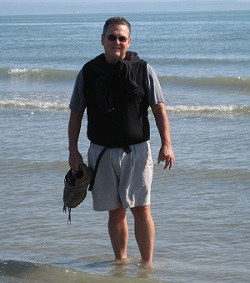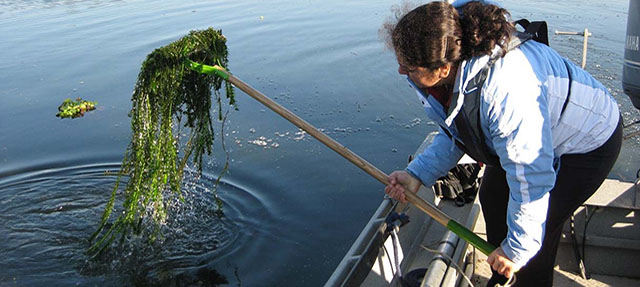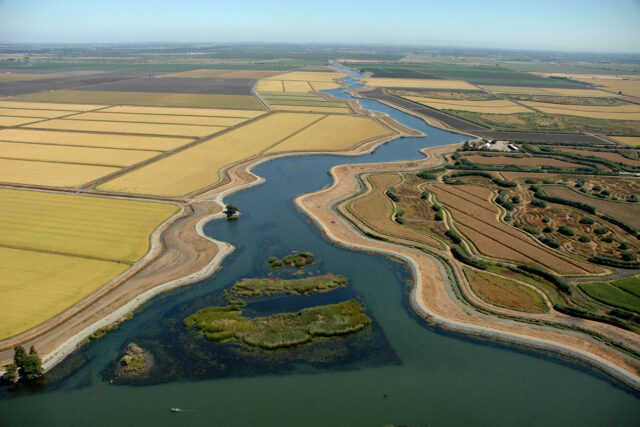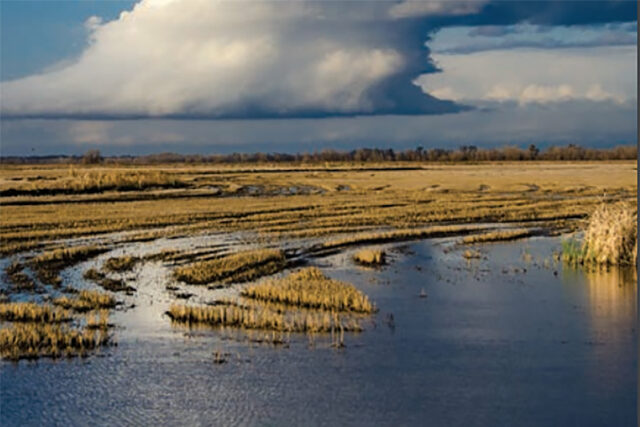The Sacramento–San Joaquin Delta has more non-native species than native ones, and its estuary is considered the most invaded in the world. We talked to Jim Cloern—an emeritus scientist with the US Geological Survey and an adjunct fellow at the PPIC Water Policy Center—about this challenge.

PPIC: How have non-native species changed the Delta?
Jim Cloern: The plant and animal communities are very different than they were 50 years ago. There are more than 200 non-native species of animals and plants in the Bay and Delta; all were introduced by people, many in the last half century. Some of these introduced species are relatively low in abundance, but some have emerged as “keystone species.” That means they now play a prominent role in the ecosystem, either by changing processes like food production for fish or by reshaping biological communities.
Probably the best-known example is a non-native clam indigenous to Asia that was first discovered in Suisun Bay in 1986. It was most likely carried across the Pacific in the ballast water of a cargo ship. Prior to this there weren’t any native clams in that part of the estuary; with no competitors, its population exploded. The clams caused a major restructuring of biological communities with their fast consumption of phytoplankton—the food supply for zooplankton, which in turn are an essential food source for young fish. After the clams took off, production at the base of the food web decreased by a factor of five—a major shock to any ecosystem. This has been a contributing factor to the decline of native fish since the 1980s.
There are many other examples of non-native species that have disturbed the Delta. The clam is just the most striking because the changes happened so fast—and have persisted for more than three decades.
Many species were introduced intentionally—for example, the striped bass and large-mouth bass, both of which are now popular sport fisheries. Both prey upon smaller species of fish, including some we’re trying to protect, such as salmon. As juvenile Chinook salmon and steelhead migrate through the Delta to the ocean, they’re preyed upon by these introduced fish species.
Some non-native aquatic plants have caused significant harm to habitat. One is the water hyacinth. Anyone who boats in the Delta in summer runs into sloughs clogged with this floating water plant. It also blocks light below the surface, limiting phytoplankton production. Various efforts have been tried to control it, but they haven’t been effective. So the state now uses herbicides. We don’t know the environmental consequences of spraying these chemicals across the Delta.
Two more problematic non-native species are on the horizon: the freshwater quagga mussel and the nutria, a large rodent from South America. The quagga mussel was introduced in eastern waterways in the 19th century and has been making its way across the country. It’s now in Southern California. As with the clam, it outcompetes zooplankton for their phytoplankton food resource, disrupting food webs that support fish.
Nutria was farmed in the US for fur, and is a major problem in coastal Louisiana and the Chesapeake Bay. It poses a major risk to the Delta—not only for the ecological disturbance it creates, but also because its active burrowing threatens Delta levees already at risk from large storms.
PPIC: Describe how introduced species are affecting management of the Delta.
JC: We respond to ecological disturbance from introduced species with protective regulations and policies. For example, the state has begun a program to inspect boat hulls to make sure they don’t carry the mussel into new waterways. And the clam problem helped motivate California’s Marine Invasive Species Act, which directs commercial ships to either treat ballast water to kill species in it or discharge ballast water at sea. However, the state’s Marine Environmental Protection Division recently reported that the federal government intends to preempt state action on this issue.
But even with new policy efforts, the reality is that non-native species are making it harder to manage at-risk native species and ecosystems already challenged by harmful algal blooms, water diversions, habitat loss, and pollution from nitrogen and other nutrients.
PPIC: What should we do as next steps?
JC: Once a non-native species becomes established it’s very hard to eradicate. So we must try to prevent the introduction of new ones. And once they’ve been found, it’s critical to take urgent action to stop them from becoming established. A few decades ago we were caught off guard by the fast spread and large impacts of species introductions. We’ve learned how critical it is to act quickly, and California is now trying to actively prevent the spread of the quagga mussel, nutria, and other species.
The grand challenge of sustaining native species has turned out to be enormously difficult. That’s because their population losses are the result of many stressors—changing climate, habitat loss, pollution, non-native species, and water diversions. Success requires solutions built from a holistic, ecosystem-based perspective that considers ecological disturbance from introduced species in this broader context.




